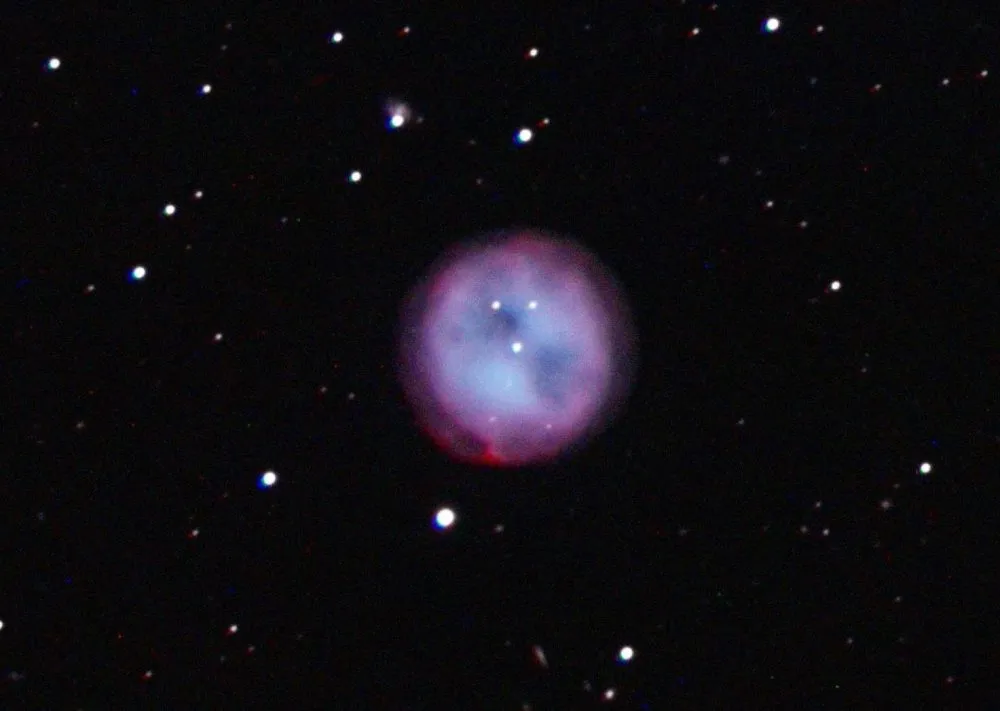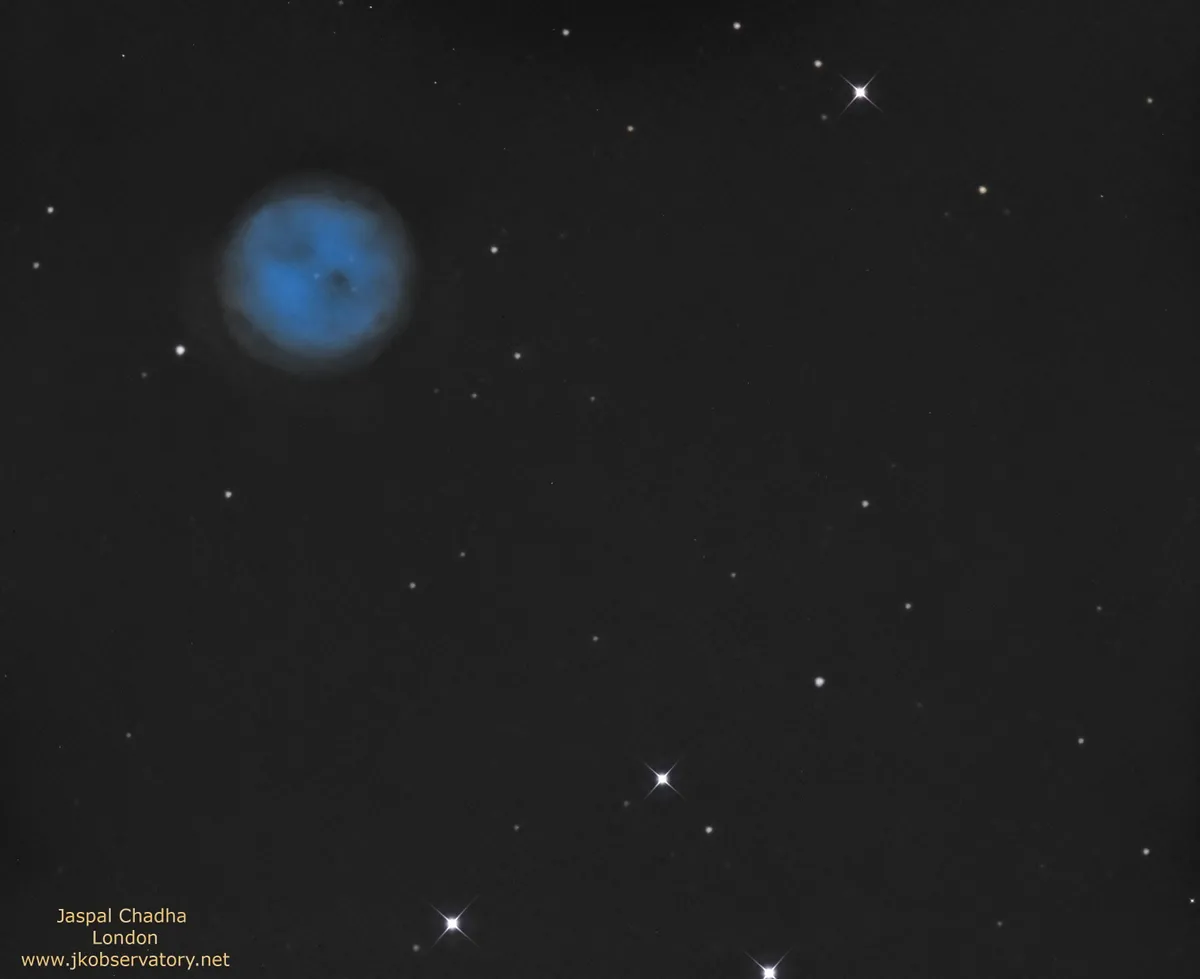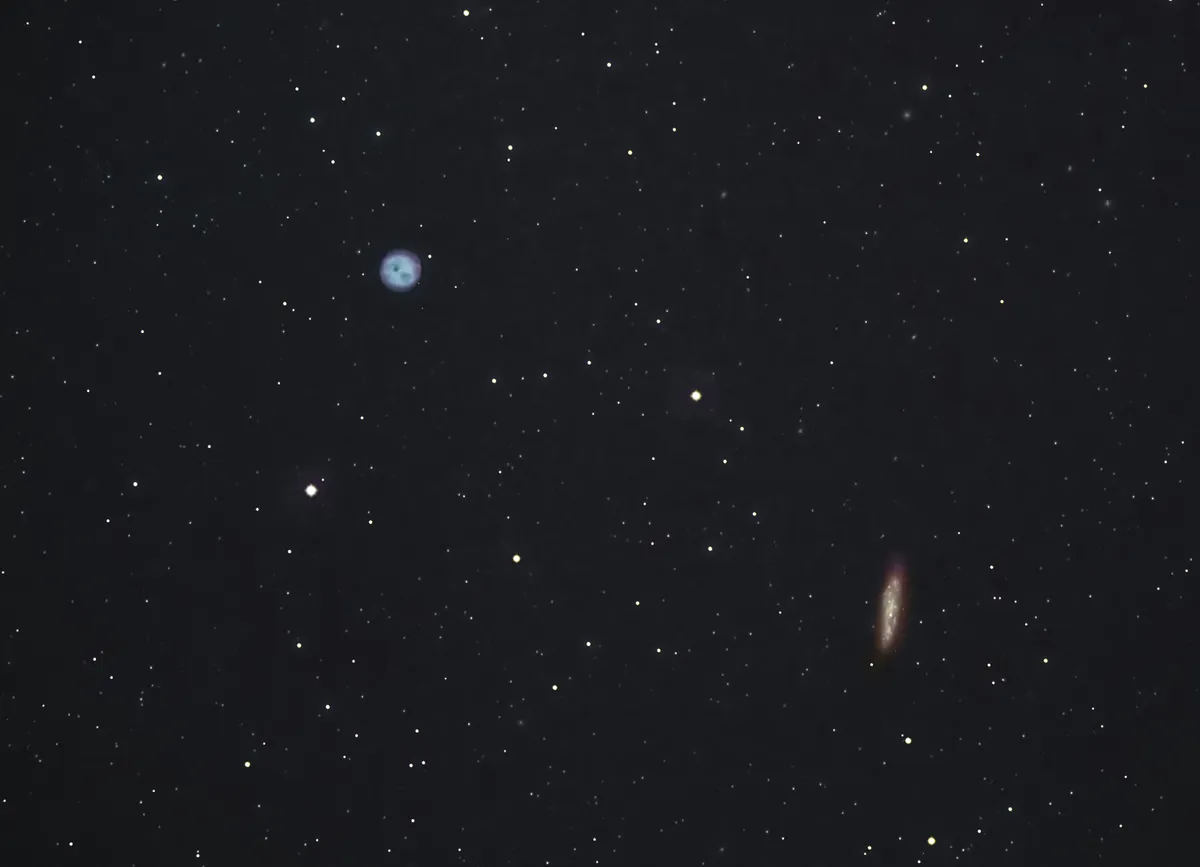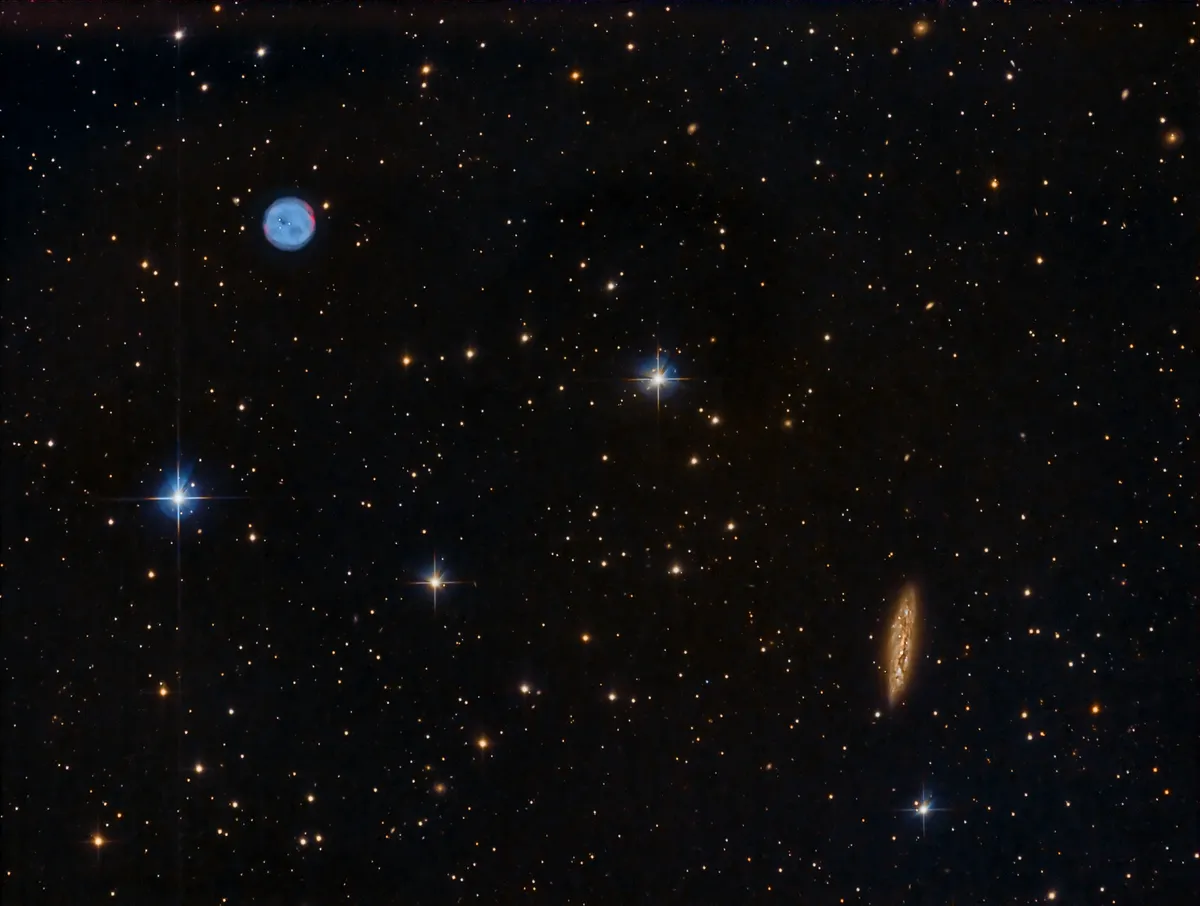The Owl Nebula is a type of object known as a planetary nebula and is located about 2,030 lightyears away in the Ursa Major constellation.
The Owl Nebula is also known as M97 - part of the Messier Catalogue - or NGC 3587, and is one of many nebulae that look like animals.
It is thought to be about 8,000 years old, and received its informal nickname over the years due to its round shape and the two dark spots that look like eyes peering out from the cosmic depths.
This round shape is a good clue as to the type of nebula M97 is.
A planetary nebula doesn't actually have anything to do with planets, as the name suggests. They form when low-mass stars begin to approach the end of their lives and begin casting off glowing shells of cosmic material.
Most of the time, this creates an expanding circular shape, making the nebula look a bit like a planetary body - hence the name 'planetary nebula'.
The star producing the Owl Nebula is also emitting two jets of dusty material that block out light, creating the two dark eyes.
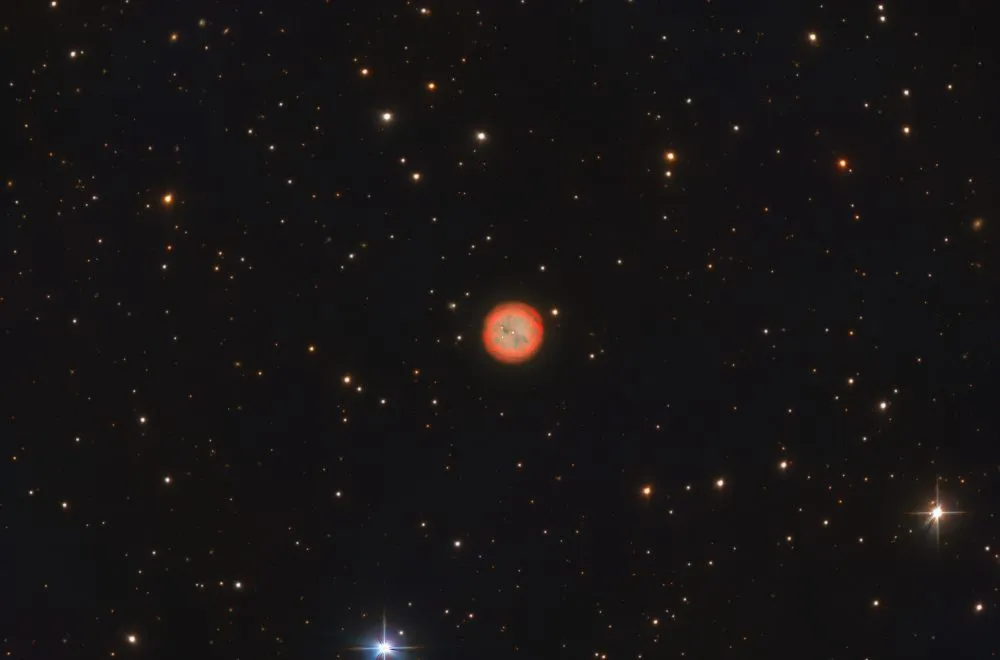
The Owl Nebula makes a few notable appearances in recent astronomy history. It was discovered by French astronomer Pierre Méchain, a friend of Charles Messier (who later added it to his deep-sky catalogue, as mentioned above).
It was also observed by William Parsons, 3rd Earl of Rosse in County Offaly, Ireland, using his famous telescope at Birr Castle, known as the Leviathan of Parsonstown.
Lord Rosse sketched the object and found it looked very much like the head of an owl, lending M97 its informal nickname.
For help finding the Owl Nebula for yourself, read our guide to Halloween astronomy, as it features as one of our favourite targets to spot on a dark autumnal night.
Below is a selection of images of the Owl Nebula captured by BBC Sky at Night Magazine readers and astrophotographers from around the world.
For advice on photographing nebulae, read our guide to deep-sky astrophotography, or if you'd like to sketch the Owl Nebula like William Parsons did, read our guide on how to draw a nebula.
And don't forget to send us your images or share them with us via Facebook, Twitter and Instagram.
